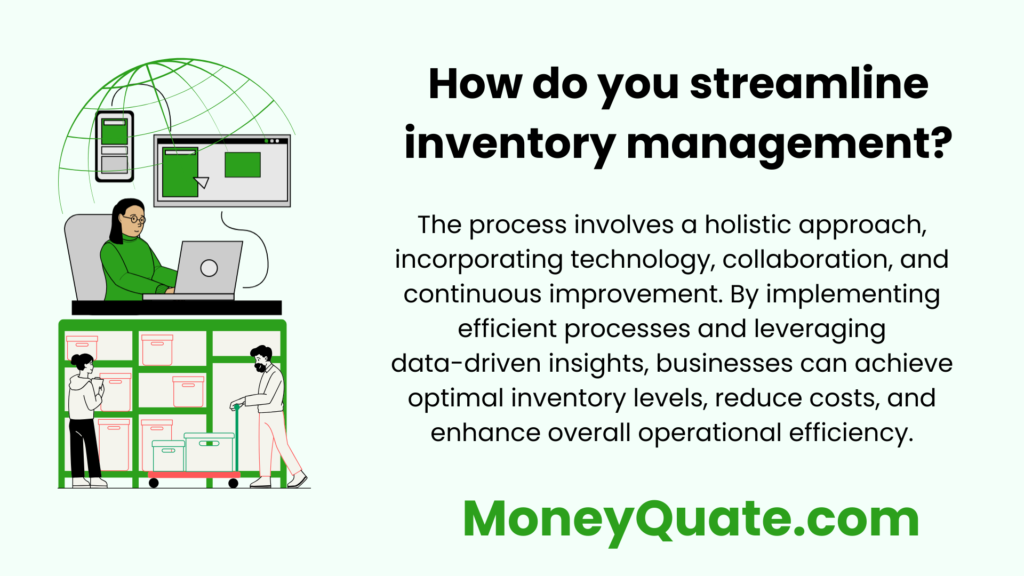Inventory management involves overseeing the flow of goods from procurement to sale, aiming to optimize stock levels, reduce costs, and enhance overall efficiency.

Contents
Benefits of Streamlining Inventory Management
- Cost Reduction: Minimizing excess stock and avoiding stockouts lead to cost savings.
- Improved Cash Flow: Efficient inventory turnover improves liquidity and cash flow.
- Enhanced Customer Satisfaction: Maintaining optimal stock levels ensures timely order fulfillment.
- Data-Driven Decision-Making: Utilizing analytics and data insights for strategic inventory decisions.
Key Strategies for Streamlining Inventory Management
- Demand Forecasting: Implementing accurate demand forecasting based on historical data and market trends.
- ABC Analysis: Prioritizing inventory items based on their value and criticality.
- Safety Stock: Determining and maintaining safety stock levels to mitigate uncertainties.
- Supplier Relationship Management: Building strong relationships with suppliers to ensure timely deliveries and favorable terms.
- Utilizing Technology: Adopting inventory management software and automation tools for real-time tracking and data analysis.
- Cross-Functional Collaboration: Fostering communication between departments to align inventory goals with overall business objectives.
Inventory Classification Techniques
- ABC Analysis: Categorizing items into A, B, and C classes based on their impact on overall costs.
- Economic Order Quantity (EOQ): Calculating the optimal order quantity to minimize carrying and ordering costs.
- Just-In-Time (JIT): Adopting a system where inventory is ordered and received just in time for production or sale, reducing holding costs.
Technological Solutions
- Inventory Management Software: Implementing software solutions for real-time tracking, order processing, and data analytics.
- Barcode and RFID Systems: Enhancing accuracy and efficiency in inventory tracking and management.
- Integration with ERP Systems: Ensuring seamless communication between inventory management and other business processes.
Continuous Improvement
- Regular Audits: Conducting periodic audits to reconcile physical inventory with system records.
- Performance Metrics: Establishing key performance indicators (KPIs) to measure and improve inventory performance.
- Feedback Loops: Creating mechanisms for continuous feedback and improvement based on operational insights.
Challenges and Solutions
Challenge: Inaccurate demand forecasting.
Solution: Implementing machine learning algorithms for more accurate predictions.
Challenge: Lack of visibility in the supply chain.
Solution: Utilizing blockchain technology for transparent and traceable supply chain operations.
Future Trends in Inventory Management
- Blockchain Integration: Increasing transparency and traceability in the supply chain.
- Artificial Intelligence (AI): Enhancing predictive analytics and demand forecasting.
- Robotics and Automation: Improving efficiency in warehouse management and order fulfillment.
Conclusion
Streamlining inventory management is a multifaceted process that involves strategic planning, technology integration, and a commitment to continuous improvement. By leveraging advanced tools and adopting best practices, businesses can optimize their inventory processes, reduce costs, and enhance overall operational efficiency.
1 thought on “Streamlining Inventory Management for Improved Profitability”